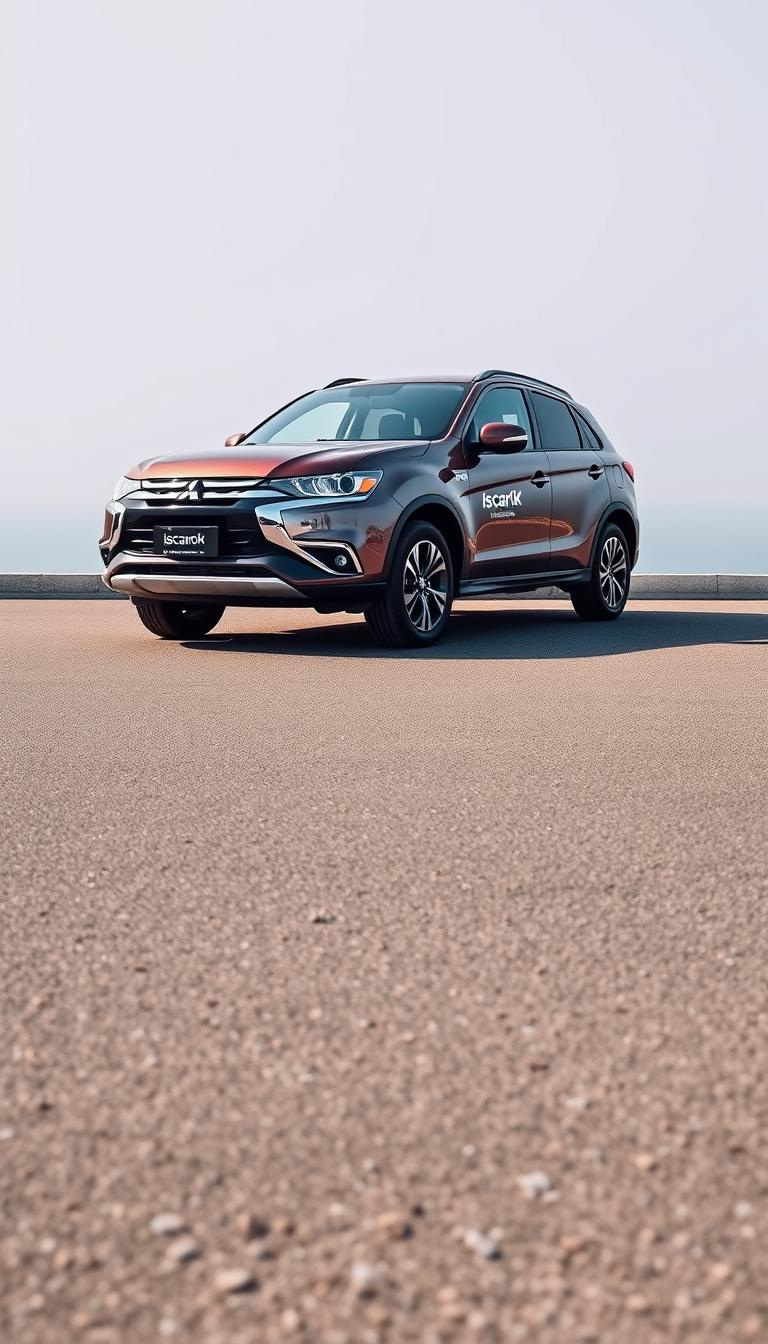The Mitsubishi ASX is a great choice for those looking for a budget-friendly compact SUV. Since 2010, it has evolved to stay ahead in the market. Knowing about its reliability is key for anyone thinking about buying one.
This guide will give you all the details on the Mitsubishi ASX’s reliability. You’ll learn about its performance, durability, and any possible issues. The ASX shows Mitsubishi’s smart move in the compact SUV market, offering value and solid engineering.
Understanding a car’s reliability is all about doing your homework. This analysis aims to give you clear facts about the Mitsubishi ASX’s reliability. This way, you can choose a car that fits your needs and expectations.
Key Takeaways
- Mitsubishi ASX has been in production since 2010
- Compact SUV segment offers competitive features
- Reliability varies across different model years
- Regular maintenance impacts long-term performance
- Comprehensive research is essential before purchasing
Overview of the Mitsubishi ASX
The Mitsubishi ASX has made a mark in the compact SUV market since 2010. It’s a versatile crossover that appeals to those who want practicality and value. Sales data shows it has sold over 1.1 million units worldwide.
Model History and Development
The ASX has faced its share of challenges over the years. It has gone through many updates to meet changing needs. Key moments include:
- Initial launch in 2010
- Four major design updates
- Continuous refinement of engine options
Market Position and Sales Performance
The ASX has been a strong contender in the global compact SUV market. European markets have been particularly fond of it, making up about 25% of its sales. Despite some issues, the ASX’s popularity has remained high.
Global Reception and Recognition
Even with mixed reviews, the ASX has kept up a solid sales record. Its appeal lies in:
- Competitive pricing
- Practical design
- Reliable performance
The ASX’s global success shows Mitsubishi’s skill in creating a versatile SUV that meets many needs.
Common Reliability Issues and Concerns
Thinking about a Mitsubishi ASX? It’s key to know about possible mitsubishi asx defects. Owners have shared many reliability worries that buyers should think about.
Big mitsubishi asx breakdowns often happen in a few main areas:
- Engine performance issues
- Transmission problems
- Electrical system failures
- Suspension wear
Experts say catching these problems early can save a lot of money. Regular checks and early fixes are key to avoiding big repairs.
“Preventative care is always more cost-effective than reactive repairs” – Auto Reliability Research Institute
Some specific worries include:
- Engine oil leaks
- Brake pads wearing out too fast
- Electronic control module issues
- Coolant system problems
Watch for signs like odd engine sounds, weird transmission behavior, and dashboard lights. These might mean serious mitsubishi asx defects that need a pro’s look.
Not every car will have these problems. But knowing about them helps you decide if the car is right for you and what upkeep it might need.
Engine Performance and Durability
The Mitsubishi ASX has a range of engines that show its power. It has two main engine types for different driving needs.
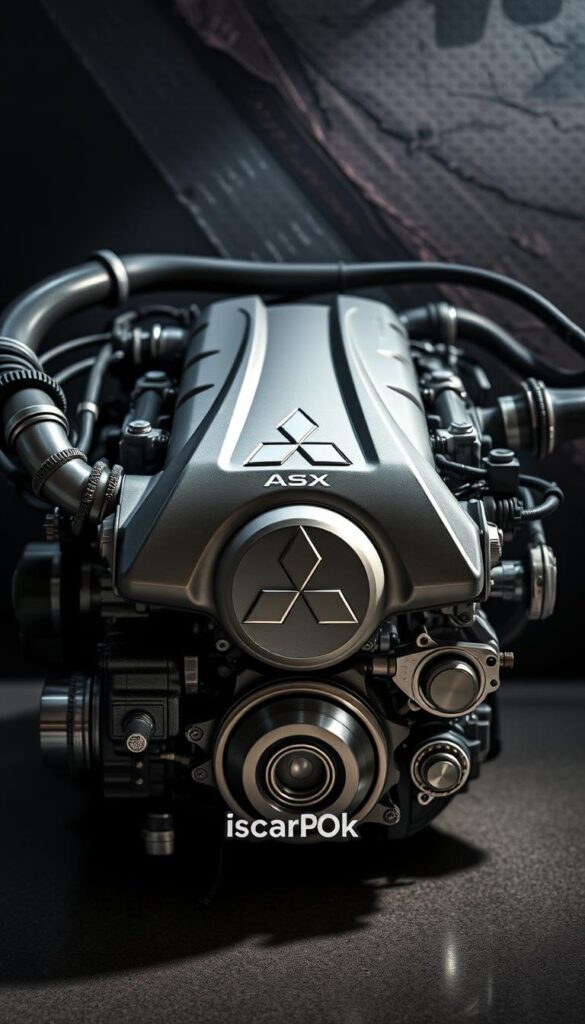
Knowing about mitsubishi asx malfunctions starts with its engine. The ASX has engines that mix power and fuel efficiency well.
2.0L Engine Analysis
The 2.0-liter engine is a strong choice in the ASX. It has 110kW of power and 197Nm of torque. It’s great for those who want a reliable compact with good performance.
- Power output: 110kW
- Torque: 197Nm
- Fuel efficiency: Competitive in its class
2.4L Engine Evaluation
The 2.4-liter engine offers more power. It makes 123kW and 220Nm of torque. This engine is for those who want more from their car.
Fuel Efficiency Metrics
Fuel use is key when looking at mitsubishi asx malfunctions and engine reliability. The engines are fuel-efficient, with good fuel economy for most.
| Engine Size | Power | Torque | Estimated Fuel Economy |
|---|---|---|---|
| 2.0L | 110kW | 197Nm | 7.9L/100km |
| 2.4L | 123kW | 220Nm | 8.5L/100km |
The Mitsubishi ASX’s engines aim to balance power and practicality. They give drivers strong performance with good fuel use.
Transmission System Reliability
When looking at the Mitsubishi ASX, how reliable the transmission is matters a lot. It comes with two types: a manual and a continuously variable transmission (CVT). Knowing the failure rates for each can help you choose wisely.
The manual transmission is often more reliable, with fewer problems reported. It’s liked for its simple feel and control. On the other hand, the CVT is more complex and needs careful checking.
- Manual Transmission Characteristics:
- More straightforward mechanical design
- Lower maintenance requirements
- Fewer complex electronic components
- CVT Transmission Considerations:
- More sophisticated shifting mechanism
- Potential for higher repair costs
- Greater sensitivity to maintenance
Failure rates for Mitsubishi ASX transmissions change with model year and upkeep. Keeping up with maintenance and driving right can help your transmission last longer.
| Transmission Type | Average Reliability Rating | Estimated Repair Costs |
|---|---|---|
| Manual Transmission | 8.5/10 | $300-$500 |
| CVT Transmission | 6.5/10 | $1,500-$3,000 |
Before buying, do your homework on the model year and get a professional check. Regular maintenance is crucial to avoid transmission problems.
Mitsubishi ASX Awaryjność: Breaking Down the Issues
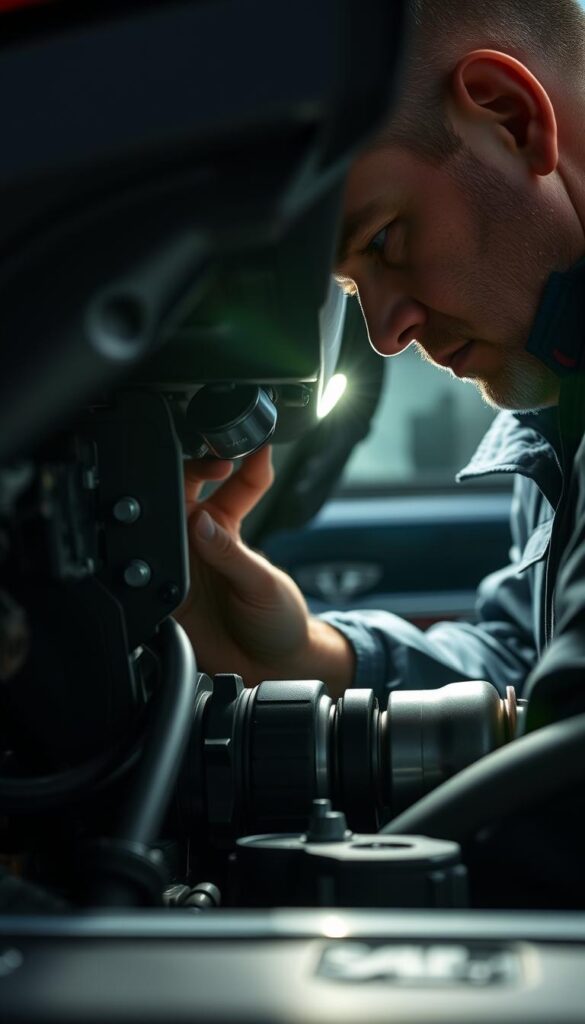
Understanding the Mitsubishi ASX awaryjność is key for both potential and current owners. The vehicle’s reliability hinges on several factors. These can affect its long-term performance and maintenance costs.
When looking at Mitsubishi ASX maintenance costs, owners should watch out for mechanical challenges. Regular checks on specific areas can lower unexpected repair bills.
Common Mechanical Problems
Drivers have noted several mechanical issues with the Mitsubishi ASX:
- Engine cooling system problems
- Transmission shifting issues
- Suspension wear in high-mileage cars
- Electrical system sensor failures
“Preventive maintenance is the key to managing potential reliability issues with your Mitsubishi ASX,” says automotive expert Michael Roberts.
Preventive Maintenance Tips
To reduce mitsubishi asx awaryjność and keep maintenance costs down, try these steps:
- Book regular professional inspections
- Stick to the manufacturer’s service schedule
- Fix small problems before they get big
- Use top-quality replacement parts
Mitsubishi offers 10 years of capped-price servicing for the ASX. Scheduled maintenance is needed every 12 months or 15,000 kilometers. This plan helps owners manage repair costs and keep the vehicle reliable.
Interior Quality and Durability
Exploring the Mitsubishi ASX interior shows a mix of quality and function. The cabin has its challenges that buyers should think about before buying. Problems with the interior are common, especially in older models.
The materials inside the car vary in how long they last. Some key points include:
- Plastic surfaces that might wear out over time
- Moderate quality dashboard parts
- Seats that are comfy but might get worn out
Infotainment systems in newer Mitsubishi ASX models have gotten much better. They offer:
- Touchscreen displays that work well
- Better connectivity options
- Easier-to-use interfaces
| Interior Component | Durability Rating | Potential Issues |
|---|---|---|
| Dashboard | Medium | Potential cracking, color fading |
| Seat Upholstery | Medium-Low | Fabric wear, potential tear |
| Infotainment System | High | Minimal reported technical problems |
It’s important to check the interior during test drives. Mitsubishi ASX problems with the interior can be lessened with good care and use.
Experts say to clean the interior often and avoid too much sun to keep it in good shape.
Electrical System Performance
When looking at the Mitsubishi ASX’s electrical system, owners should know about possible malfunctions. These can affect how well the vehicle works. The system is advanced but comes with its own set of challenges.
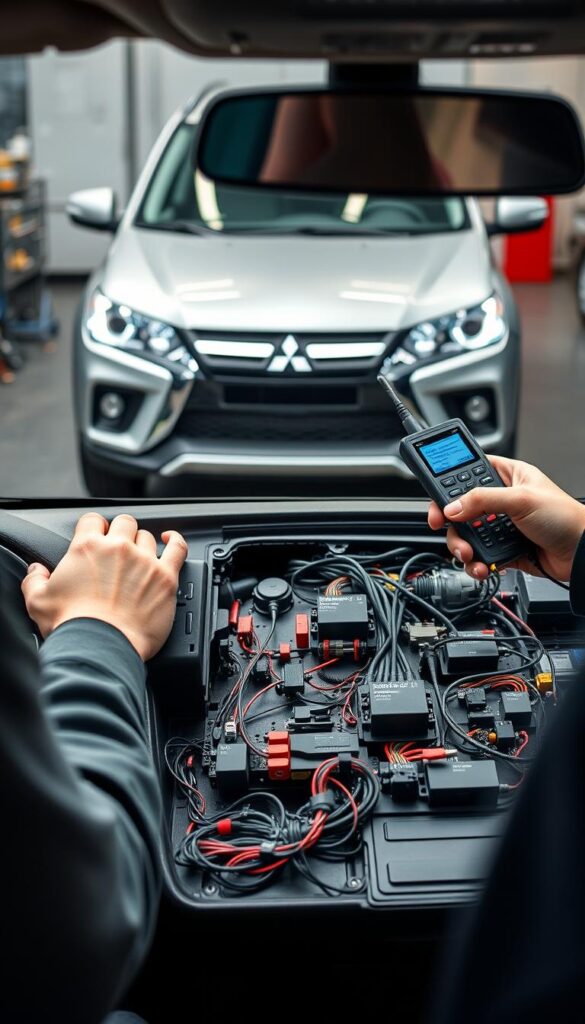
Modern cars like the ASX have complex electrical systems. Trouble codes are key in spotting problems. You can find detailed code translations to understand electrical issues.
Common Electrical Challenges
Many electrical problems are seen in Mitsubishi ASX owners. These include:
- Battery drainage issues
- Sensor malfunction warnings
- Intermittent failures of electrical parts
- Errors in computer system communication
Sensor and Computer System Reliability
The ASX’s sensor network needs careful watching. Precision in electrical diagnostics can stop long-term damage and costly fixes.
| Electrical Component | Common Malfunction | Potential Cause |
|---|---|---|
| Oxygen Sensors | Erratic Readings | Wiring Degradation |
| Mass Airflow Sensor | Performance Issues | Contamination |
| Engine Control Unit | Communication Errors | Software Glitches |
Regular diagnostic checks can help manage potential problems. This keeps your vehicle’s electrical system working well.
Suspension and Steering Components
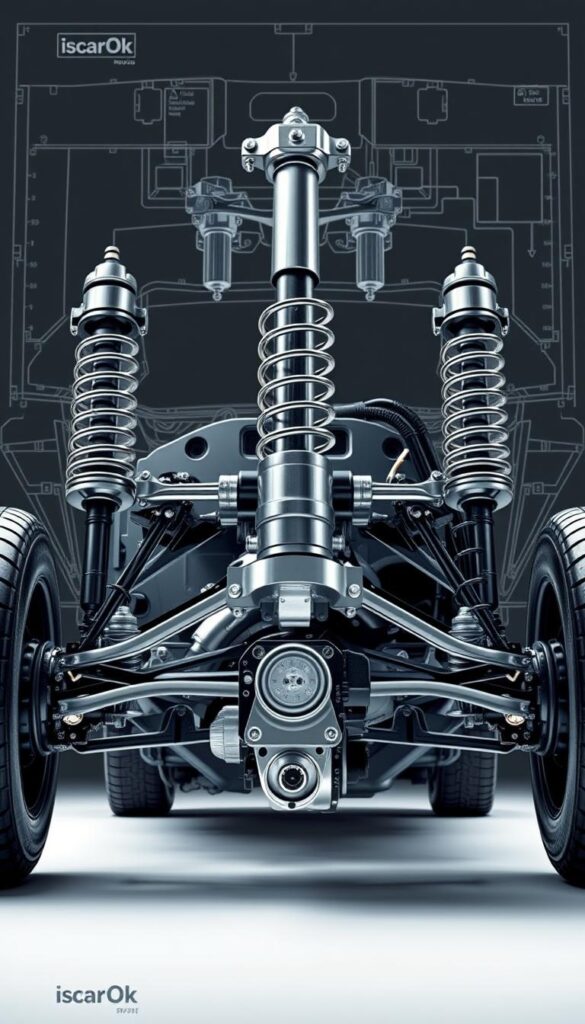
The Mitsubishi ASX suspension system has both good and bad points. It’s great for off-road adventures but has some issues with steering and suspension. These problems are important for anyone thinking about buying the ASX.
How well the ASX drives depends on the model and how well it’s been taken care of. The suspension system has several parts that affect how the car handles:
- MacPherson strut front suspension
- Multi-link rear suspension
- Stabilizer bars
- Shock absorbers
Many owners have found problems with the suspension, especially in cars with a lot of miles. These issues can cause:
- Uneven tire wear
- Body roll when turning
- Slow steering
- Noise when turning
“The ASX’s suspension design offers decent ground clearance, but it sacrifices some on-road comfort for off-road capability.” – Automotive Performance Review
Knowing about these problems can help you decide if the ASX is right for you. It’s important to think about the long-term costs and maintenance needs.
| Suspension Component | Common Issues | Estimated Repair Cost |
|---|---|---|
| Strut Mounts | Wear and Noise | $250-$450 |
| Shock Absorbers | Reduced Damping | $300-$600 |
| Control Arms | Bushing Deterioration | $200-$400 |
Regular maintenance and checking the car often can help avoid suspension problems. This makes driving safer and more comfortable.
Safety Features and Reliability
When looking at the Mitsubishi ASX, safety is key. Buyers check the ASX’s safety features closely. It’s known for its top-notch safety tech that keeps everyone safe.
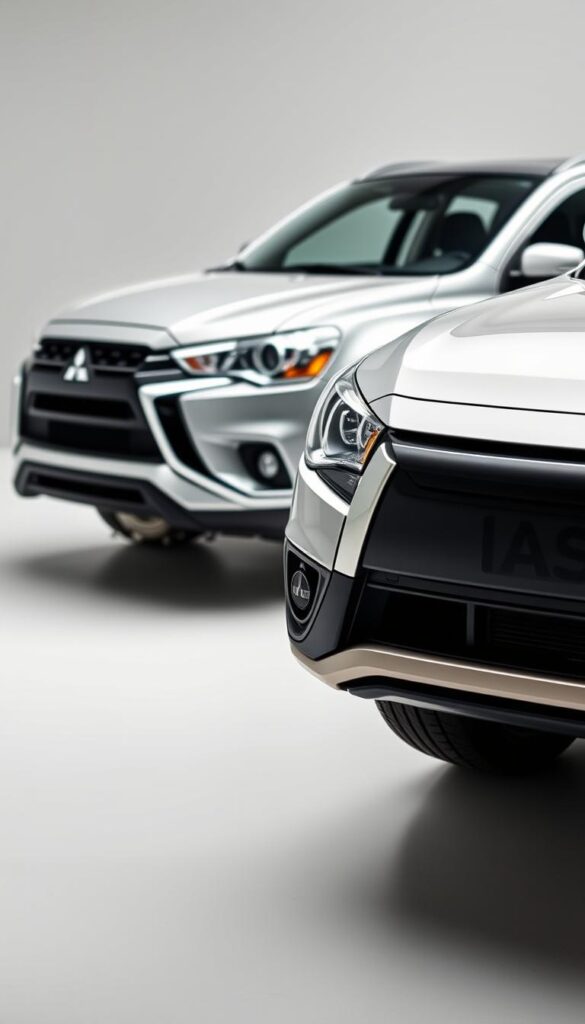
Your safety is top priority, and the Mitsubishi ASX has got you covered. It has advanced systems for protection. It even got a five-star safety rating from Euro NCAP when it first came.
Safety Ratings Evolution
The Mitsubishi ASX’s safety ratings have always been strong. It has many safety features, including:
- 5-Star ANCAP Safety Rating
- 7 Advanced Airbags
- Reinforced Impact Safety Evolution Body
- Side-impact Protection Bars
Active Safety Systems Performance
The ASX’s active safety systems add extra protection. They work all the time to stop accidents before they happen:
- ASTC (Active Stability and Traction Control)
- ABS with Electronic Brakeforce Distribution
- Brake Assist System
- Hill Start Assist
Mitsubishi ASX reliability in safety means more than just surviving accidents. It’s about preventing them. Its advanced sensors and control systems keep you safe in all driving conditions.
When you look at the Mitsubishi ASX, safety is a big part of its reliability. It gives drivers peace of mind, knowing their vehicle protects what’s most important.
Maintenance Costs and Service Intervals
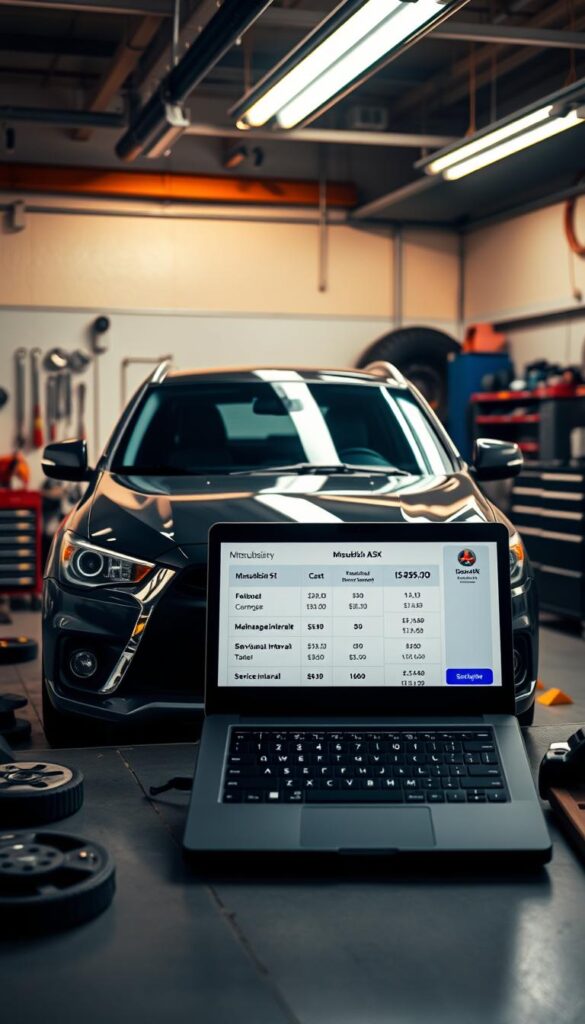
Knowing the mitsubishi asx maintenance costs is key for potential owners. Mitsubishi has a service plan that makes owning a car more predictable and affordable. They offer a 10-year capped-price servicing program for the ASX, which can lower your long-term maintenance costs.
The maintenance schedule for the Mitsubishi ASX is easy to follow. You need to service your car every 12 months or 15,000 kilometers, whichever comes first. This regular schedule helps you plan and budget for maintenance.
| Service Interval | Estimated Cost | Key Maintenance Items |
|---|---|---|
| Annual/15,000 km | €270 – €350 | Oil change, filter replacement, brake inspection |
| Major Service (60,000 km) | €450 – €600 | Comprehensive system check, timing belt, additional components |
Your maintenance costs can change based on how you drive and local service rates. For the most accurate pricing, check the official Mitsubishi pricing guide for your model and year.
- Annual service costs average between €270-€350
- Capped-price servicing for 10 years
- Predictable maintenance schedule
Pro tip: Regular maintenance can prevent expensive repairs and keep your Mitsubishi ASX reliable and valuable.
Long-term Ownership Experience
Owning a Mitsubishi ASX means understanding its long-term performance and value. Drivers looking at this compact SUV need real-world insights. These go beyond just the initial thoughts on mitsubishi asx reliability.
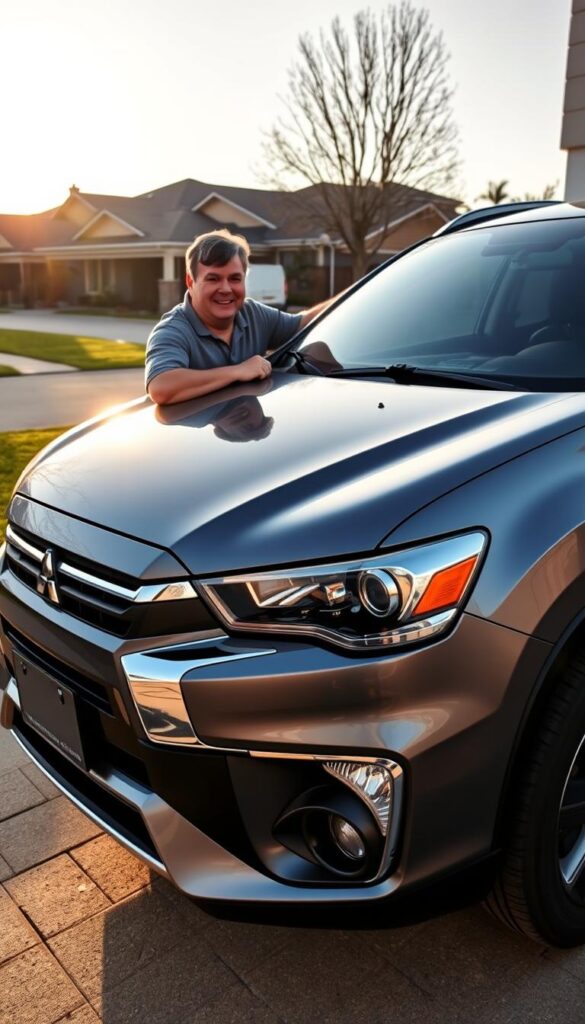
The journey of owning the Mitsubishi ASX shows both good and bad sides. Owners share mixed feelings. Some say it’s durable, while others point out areas for improvement.
Owner Reviews and Feedback
Consumer feedback is key to understanding the ASX’s long-term performance. Here are some important points:
- It’s fuel-efficient in the city.
- It has reliable basic maintenance needs.
- The interior is comfy for daily drives.
- There are sometimes issues with its electronic systems.
Resale Value Analysis
The Mitsubishi ASX’s reliability affects its resale value. It usually keeps a moderate value, like other compact SUVs. What affects resale includes:
- The vehicle’s overall condition.
- Its maintenance history.
- Mileage.
- Market demand.
Before buying a used Mitsubishi ASX, potential buyers should check the vehicle’s history and do a thorough inspection.
Comparison with Competitors

Looking at the Mitsubishi ASX in the small SUV market, we see a mix of performance and reliability. The ASX is special because it combines features that set it apart from rivals like the Hyundai Kona, Kia Seltos, Mazda CX-3, and Toyota C-HR.
Here are the key points to compare the Mitsubishi ASX:
- Reliability Ratings: The ASX shows steady performance with moderate breakdown frequencies
- Maintenance Costs: It’s often cheaper than its premium rivals
- Build Quality: It’s built well with few major mechanical problems
The Mitsubishi ASX’s awaryjność shows some interesting facts when compared to its competitors. Each car has its own strengths. But the ASX offers a good mix of reliability and cost-effectiveness.
| Competitor | Reliability Score | Average Maintenance Cost |
|---|---|---|
| Mitsubishi ASX | 7.5/10 | $450/year |
| Hyundai Kona | 7.2/10 | $480/year |
| Kia Seltos | 7.6/10 | $460/year |
Choosing the Mitsubishi ASX depends on what you need and want. It offers a good mix of reliability, performance, and value in the small SUV market.
Known Recalls and Technical Service Bulletins
Mitsubishi ASX defects can really hurt a car’s reliability and make owners unhappy. Knowing about recalls helps buyers make smart choices when buying a car.
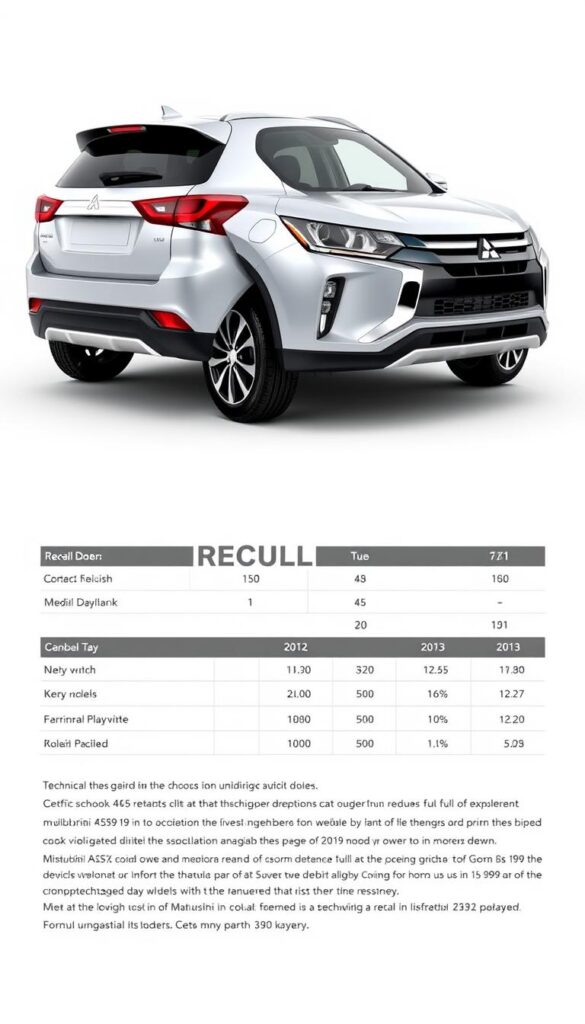
Recalls are big deals for a car’s life. For the Mitsubishi ASX, there have been several important issues that led to recalls.
Major Recall Highlights
- Potential brake system vulnerabilities
- Electrical system component failures
- Transmission performance concerns
- Structural integrity investigations
Manufacturer Response Strategies
Mitsubishi usually fixes mitsubishi asx defects with big repair programs. They do this by:
- Notifying owners right away
- Free checks for problems
- Replacing parts for free
- Offering longer warranties for some issues
| Recall Year | Affected Components | Repair Status |
|---|---|---|
| 2015 | Brake Hydraulic System | Completed |
| 2017 | Electrical Wiring Harness | Ongoing |
| 2019 | Transmission Control Module | Resolved |
If you have a Mitsubishi ASX, check if it’s been recalled. You can do this on the manufacturer’s website or by contacting a local dealer. They can tell you about any defects and what you can do about them.
Insurance Costs and Repair Frequencies
Knowing the insurance costs and repair frequencies of the Mitsubishi ASX is key for potential buyers. Breakdowns in the Mitsubishi ASX can raise your long-term costs. It’s vital to check the vehicle’s reliability before buying.
Insurance companies look at several factors to set premium rates for the Mitsubishi ASX:
- Repair complexity of specific vehicle models
- How often the Mitsubishi ASX breaks down
- Costs of parts and replacements
- Overall safety ratings
The average yearly insurance for the Mitsubishi ASX is between $1,200 and $1,800. This depends on where you live, your driving history, and the coverage you choose. Drivers with clean records usually get better rates.
Common repairs that affect insurance costs include:
- Engine system diagnostics
- Transmission maintenance
- Electrical system repairs
- Suspension component replacements
To avoid frequent breakdowns, regular maintenance and early servicing are advised. Getting comprehensive insurance can help cover unexpected repair costs. This gives ASX owners peace of mind.
Warranty Coverage and Support
When you look at the Mitsubishi ASX, knowing about its warranty is key. It helps you see if there are any mitsubishi asx failure rates. Mitsubishi has a warranty package that gives owners peace of mind.
The standard warranty for the Mitsubishi ASX includes several key protections:
- 10-year/200,000 km powertrain warranty
- 5-year/100,000 km new vehicle limited warranty
- 5-year roadside assistance program
To keep your warranty valid, you must follow certain service rules. You need to service your vehicle at authorized Mitsubishi dealerships. This helps Mitsubishi track any mitsubishi asx failure rates and make sure your car is well-maintained.
Important warranty points to remember include:
- Regular scheduled maintenance is a must
- Warranty coverage can be lost if you make unauthorized changes
- Using genuine Mitsubishi parts for repairs is recommended
Even with a good warranty, it’s important to know its limits. Some parts might have different coverage times. Also, wear-and-tear items usually aren’t fully covered.
Professional tip: Keep detailed service records to ensure uninterrupted warranty coverage for your Mitsubishi ASX.
Mitsubishi’s warranty shows the company’s faith in the ASX’s reliability. It also shows their dedication to making customers happy.
Conclusion
When looking at the Mitsubishi ASX reliability, buyers need to think about several things. The compact SUV is affordable and has useful features. But, it faces challenges in keeping up with newer models.
Think about the ASX’s mechanical strength, upkeep needs, and long-term costs. Some models perform well, but others might have reliability issues. Knowing these details helps you decide if the Mitsubishi ASX fits your needs.
If reliability is key, get a detailed check before buying and look at the service history. The ASX is good for those watching their budget but might not be the latest in small SUVs. Research and your driving needs will help decide if it’s right for you.
Buyers should have realistic hopes for the Mitsubishi ASX. It’s a dependable car that’s easy on the wallet but not top-notch. Knowing its good and bad points helps you see if it’s a good choice for you.

